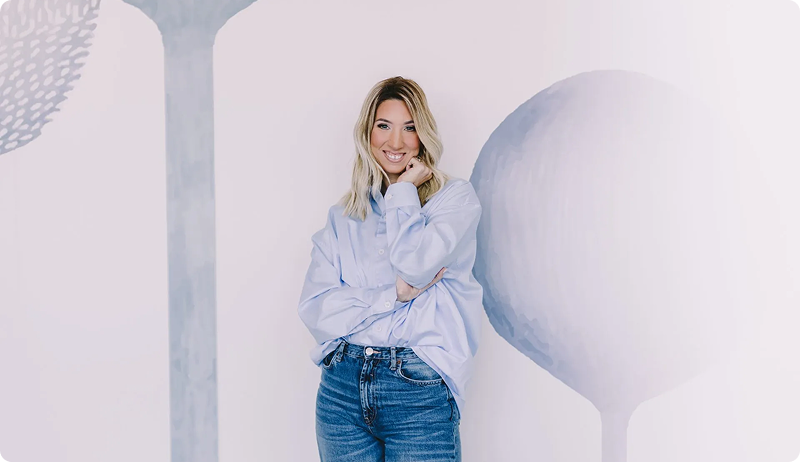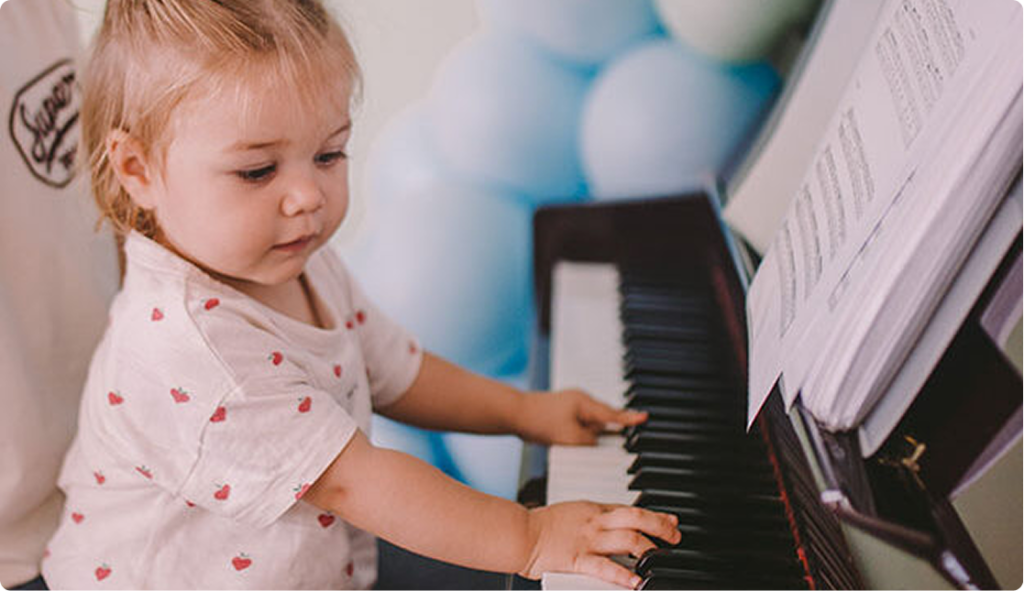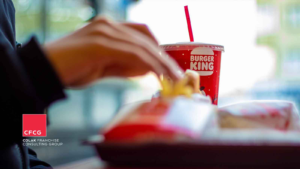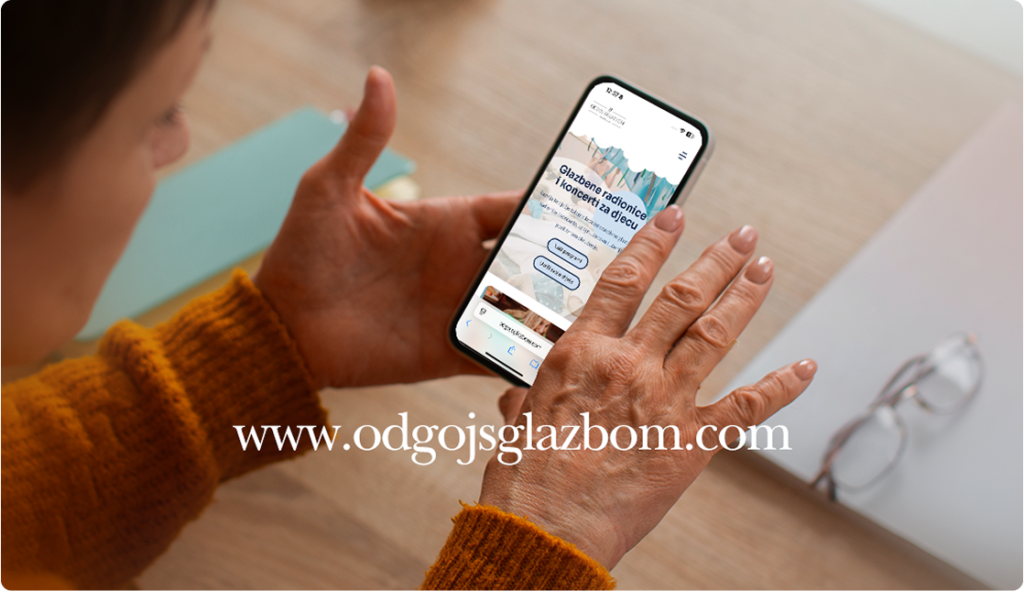
Can a Children’s Music Workshop Become a Franchise? Lana Marasović Proved It Can – 13 Times

Today we bring a story from one of those industries that at first glance might not seem “scalable” – but precisely because of that, it represents a fascinating franchise case. This is the story of “Raising with Music”, a concept created by Lana Marasović , an academic musician and psychotherapist from Split, who combined her two great passions – music and early child development.
During her studies and early motherhood, Lana began exploring how music could be used as a tool for emotional and developmental progress in children. Through her own work and parenting experience, she developed an original approach that combines the Orff-Schulwerk music method and principles of child psychological development.
This is how “Raising with Music” was born – a program that teaches children to express
themselves through notes, movement, and emotion, but also profoundly affects parents.
At first, it was just a small local project in Split, but after the pandemic, a real market explosion happened – in just one month, Lana enrolled more than 300 children, with another 300 on the waiting list.
That was the clear signal that the concept had outgrown its local framework. Instead of opening new centers herself, Lana decided to take the franchise route.
With no previous experience in franchising, in less than three years, she managed to sell 13 franchises, of which 10 are active today. That’s an impressive result in the educational and child-development industry, where brand and emotion are crucial, and standardization and knowledge transfer are often the biggest challenges.
What makes this case particularly interesting is how Lana built an authentic, emotionally-driven brand that also functions as a professionally structured franchise system. Instead of formal “academic” training, each new franchisee completes a five-day in-person training in Split and a series of eight video lessons personally recorded by Lana – ensuring that what is transferred is not just knowledge, but also the mission, energy, and emotion of the brand.
Key takeaways from this case:
- Merging passion and expertise - an example of how a personal story and background can become the foundation of a scalable model.
- Authenticity as the brand’s backbone – Lana proved that a brand built on genuine emotion can become a franchise if you standardize the experience, not just the process
- Franchising in “soft” industries (like education, music, therapy) is possible but requires a precise balance of personal approach and systemization.
- Power of personal presence – Lana still personally visits all centers once a year and holds monthly online meetings with partners, ensuring authenticity and quality.
- Challenges and lessons learned – the first wave of franchises revealed how crucial standardization and partner selection are; some centers closed, but the system grew stronger.
Today, “Raising with Music” stands as an example of how an educational concept can evolve into a successful franchise brand , even without initial capital, a large team, or aggressive marketing – as long as there is a clear mission, emotion, and the ability to transfer that energy to others.
If you also have an educational, service, or lifestyle concept that could become a franchise, reach out to us for a free consultation at [email protected]. We’ll be happy to help you assess your brand’s potential and explain the concrete steps toward building your franchise system.

Interview
1. When and how was the concept “Raising with Music” created?
The concept “Raising with Music” actually came to life quite naturally, from my personal experience of motherhood and from the need to combine my two great loves – music and upbringing. After graduating from the Academy, I got married soon after and became a mother. I always knew I wanted to work with children, but at that time I didn’t yet know in which direction that would go.
Very early on, I went to Austria, to the Mozarteum, where I received additional training in the Orff-Schulwerk approach. That program amazed me and opened a completely new perspective on working with children through music. Upon returning to my hometown, I started the first music workshops — which at that time didn’t look like today’s “Raising with Music,” but they were my beginning, my exploration, and search for my own approach.
As my son grew and I experienced his first tantrums, I began to understand more deeply the child’s development and needs. I realized that music can be a wonderful tool, but that every child requires an individual approach – we cannot “put them all in the same age box.” That moment of recognizing the need for finer group structures and understanding emotional development in children was the turning point.
At the same time, I started further education in early child development, which later led me to train as a psychotherapist. The combination of those two worlds – music and psychology – became the foundation of what we know today as “Raising with Music.” Interestingly, I chose that name even before I went into early development and psychotherapy, as if it was somehow written in advance how that path should unfold.
The first real steps toward the brand happened spontaneously. In Split, “Raising with Music” quickly became recognized among parents, children, and professionals, and new professional doors opened for me – even collaboration with the Faculty of Humanities and Social Sciences.
Like for everyone, the pandemic brought a major halt – almost a year and a half without regular work. But I didn’t give up. I stayed active on social media, organized themed workshops, classical music concerts for babies and children, and launched the “Music and Art Outdoors” program. And out of that challenging period came something beautiful – after Covid, “Raising with Music” literally exploded. Within a month we enrolled more than 300 children, and just as many remained on the waiting list.
That was the first time I truly realized I had a brand in my hands. Instead of moving and starting from scratch, I decided to launch a franchise, because I wanted this concept – which combines music, development, and upbringing – to come to life in other cities, but always with the same heart and values it began with.
2. How did the decision to franchise the concept “Raising with Music” come about?
The decision to franchise actually came very spontaneously, like many other things in my life. I was already familiar with the franchise concept, I knew a few brands that went that route, but I had never seriously considered it for myself — until one morning I simply said: “I’m going to try!”
I’m the kind of person who jumps “headfirst into the unknown,” and if I swim – I swim. And I can now say I certainly swam this time.
Today, 13 franchises have been sold, of which 10 are active. Some have closed, some never opened, but I don’t see that as failure. Those were all lessons that helped make the system more stable and clear.
The most important part of the entire process for me wasn’t selling, but transferring the vision and emotion. I realized that this is best achieved in person, through training in my main center. There, my partners and their employees spend five intensive days listening to me, observing the work, and learning through experience. Before that, they go through eight video lessons I recorded myself, where I talk about the vision, mission, and emotion of “Raising with Music.”
It’s very important to me that partners entering the system already know the program and carry internal motivation – that they’re not doing it only for financial reasons, but because they truly believe in the idea that society can be changed through music. I always look for that spark, that inner fire in them.
The process of building the franchise system was full of challenges. The educational part was probably the easiest for me because I knew exactly what I wanted to convey. Over time, I realized that some of the content could be prepared and recorded in advance, while the rest should remain a live experience.
But standardization – that was the real challenge. What you learn only after selling the first franchises is that you finally see everything that doesn’t work. That’s when the real work begins. I had to go through a period of constant changes while partners were already operating. It required patience, adaptation, and communication.
Through all this, I try to maintain good relationships with my partners. I don’t act like a boss, because I’m not – I’m their partner, but a partner with the responsibility and experience to guide the direction. The balance between support and authority isn’t always easy, but I believe that’s exactly what builds a healthy franchise community.
The biggest challenge, however, remains finding the right people. In franchising, it’s not enough just to sell – you need to recognize who truly has an entrepreneurial spirit and who buys a franchise thinking someone else will take responsibility. Distinguishing that – that’s perhaps the hardest and most important part of the job.
3. How do you recognize the right franchise partner? What kind of person best fits your concept?
My ideal franchise partner is usually a woman between 35 and 45, very often a mother, because she knows what parenthood brings – all the challenges, insecurities, and those moments when you wonder if you have enough strength and tools to get through it. Such women deeply understand what “Raising with Music” really is – a blend of emotion, support, and growth.
These are women with an entrepreneurial mind, but also with a heart. They want to create security and stability for themselves, they’re ready to work as much as it takes to achieve it, and they’re not afraid to take responsibility for their path. They don’t shy away from work but see it as an opportunity to grow – personally and professionally.
My ideal partner is a person full of ideas, but mature enough to understand the importance of standardization – someone who knows when to listen, accept suggestions, and follow the direction that ensures brand consistency. It’s also important that it’s someone with the courage to step out of the system – whether that’s the state system, a corporation, or simply a framework that limits them – and who’s ready to create their own space of freedom and stability. Such people don’t run from responsibility, they consciously embrace it.
4. How do you maintain quality and authenticity of the program across different locations?
That’s a very important question for me and something I work on a lot. Once a year, I visit all centers – which is physically and logistically demanding, but I believe personal contact is irreplaceable. I still do it in person because I love feeling the energy of each group, seeing how they work, observing the relationship between the leader and the children, and giving personal suggestions for improvement.
In addition, once a month I have individual meetings with every partner. Those are our moments for open conversation – I listen to their ideas, needs, and challenges, and together we find ways for the program to keep growing while maintaining authenticity.
My plan is to soon introduce an online monitoring system for the centers, because we’re growing and expansion requires new tools, but personal contact will always remain at the core. I think this connection between me and the partners is exactly what makes “Raising with Music” beat with the same heart everywhere, even though it’s in different locations.
5. What role does music play as a language of connection among franchisees and participants?
Music is, simply put, our common language. It connects, touches, and opens us in ways that words sometimes cannot. Every time I conduct training, there’s always a moment when the space fills with emotion – there are often tears, laughter, and silence. Music touches us all, each in their own way, but always deeply.
I think that’s why everyone who joins “Raising with Music” feels a special bond with the program. It’s not just professional – it’s personal.
Music connects us with children, with parents, but also with each other – as a community of people who believe that through notes, rhythm, and emotion, much more than a melody can be conveyed. A message of understanding, warmth, and togetherness can be shared.
6. What kind of feedback do you get from parents and children?
The feedback is simply – beautiful. Parents often say that “Raising with Music” changes children’s lives. In Split, among parents, it’s often said that “children start speaking through music,” and I truly see that as the highest possible compliment. Some children who were delayed in speech simply start talking through music and movement. Music becomes their bridge between emotion and expression, and that amazes us every single time.
The waiting list in Split is huge, and over time other centers are also growing and developing. Of course, we’ve been present in Split for eight years, while other centers are younger – two to three years – so everything progresses naturally at its own pace. But what’s common to all is that parents feel a change – in their children and in themselves.
7. Do you have a moment that stayed with you as confirmation that your work truly makes an impact?
Yes, a very special one. It was in 2024, when I opened the center in Samobor and went for the first follow-up visit. I sat in a group and noticed a sign language interpreter. At first, I didn’t understand what was happening because the instructor hadn’t told me anything – she wanted it to be a surprise.
Later, I realized that one deaf mother was coming with her child and paying for the interpreter herself so she could follow and participate in the workshop. I was overwhelmed with emotion. We later talked, and that mother expressed such love and gratitude for having a program where she could participate equally alongside her child.
That was the moment when I deeply felt – this changes lives. That moment stayed engraved in me and in everyone who was there.
8. How do you see the future expansion of “Raising with Music”?
I see it primarily across our language region – Croatia, Bosnia and Herzegovina, Serbia, and Montenegro.
I believe that’s a natural and sustainable direction, because our program uses many original songs and texts that would be very hard to translate into other languages without losing emotion and meaning.
I’m also planning an online program format so that parents and children from cities where we don’t yet have centers can participate and experience at least part of “Raising with Music.”
That’s the next big step, and although I’m still exploring the exact direction, my wish is to make everything we do more accessible to everyone who wants it.
9. Looking back – what would you do differently in developing the franchise?
Looking back, I think I would have hired someone from the very beginning to handle the sales and management of the franchise business. Alongside creating the program, I was trying to handle marketing, sales, administration, standardization – everything that actually isn’t part of my natural area. It drained me more than I expected.
Of course, today I’m much more skilled in those areas; I’ve educated myself and grown, but if I could do it again, I would immediately invest in someone to take over that part. Or I’d sell a master franchise and focus only on what I love most – creating programs, training, and quality control.
10. What would you say to entrepreneurs who have an educational concept and are thinking about expanding through franchising?
I’d say – take that step, but do it wisely and with support.
I won’t lie – the process is challenging, extensive, and full of unexpected situations. If I had known how much work awaited me, I might have thought twice before starting. But I’m glad I did, because this journey taught me invaluable lessons.
Franchise expansion has many advantages, but it requires a team and a system.
I’d recommend everyone not to go through it alone – have people by your side for sales, marketing, legal matters, and finance.
At the beginning, I did all that by myself and went through burnout – an experience I wouldn’t wish on anyone.
New posts


What Franchisees Really Want from a Franchisor

